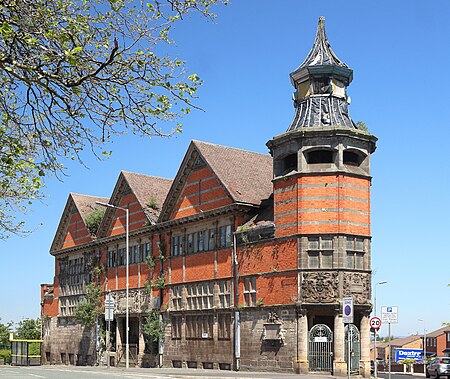Everton Library
Grade II listed buildings in LiverpoolGrade II listed library buildingsUse British English from November 2018

Everton Library is a disused library building in Everton Brow, Liverpool. Designed by architect and Liverpool City Surveyor Thomas Shelmerdine and constructed in 1896, it remained in use as a library until 1999. It was used by community groups for a few years but since 2018 it has been derelict for 12 years. There are plans in progress to convert the building for use as an arts, culture, heritage and enterprise centre. In September 2019, it was named on the Victorian Society's list of the top ten most endangered buildings in England and Wales.
Excerpt from the Wikipedia article Everton Library (License: CC BY-SA 3.0, Authors, Images).Everton Library
St Domingo Road, Liverpool Everton
Geographical coordinates (GPS) Address Nearby Places Show on map
Geographical coordinates (GPS)
| Latitude | Longitude |
|---|---|
| N 53.425805555556 ° | E -2.9706388888889 ° |
Address
ST DOMINGO ROAD/HEYWORTH STREET
St Domingo Road
L5 0RS Liverpool, Everton
England, United Kingdom
Open on Google Maps






